How Long Does Salmon Last In The Fridge — Storing Salmon –– Embarking on a culinary journey with salmon means knowing how to store it properly, ensuring that every dish you prepare is delicious and safe.
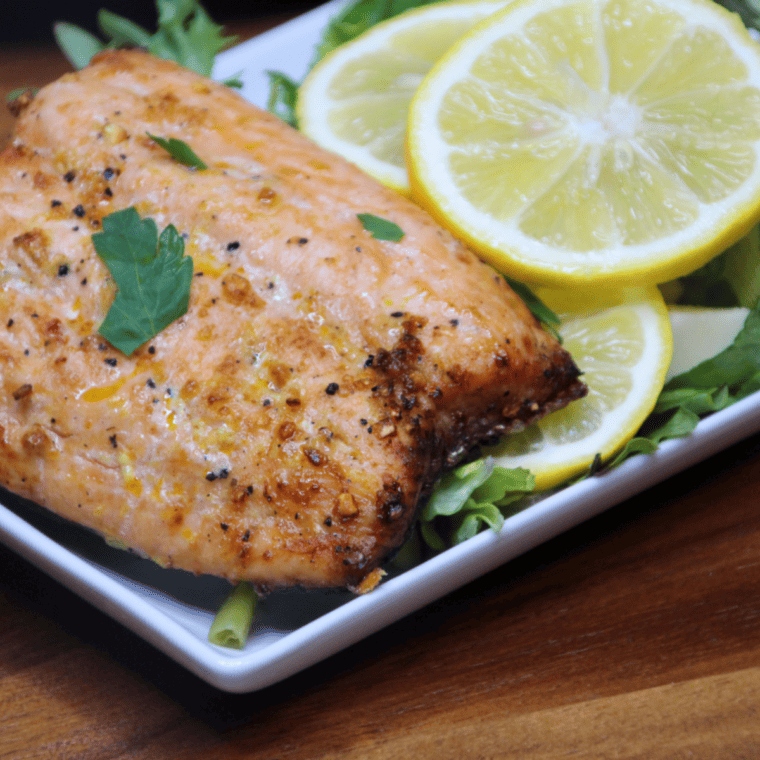
Whether you’ve picked up a fresh fillet from the market or have leftovers from a scrumptious salmon dinner, understanding the ins and outs of storing salmon is crucial.
In this guide, we’ll delve into the best practices for keeping your salmon fresh, whether in the fridge or freezer, and how to recognize when it’s time to enjoy it or when it’s past its prime.
From fresh catches to cooked creations, let’s explore the essential tips and tricks for storing salmon, maximizing its shelf life while preserving its quality and flavor. 🐟💡🍽️
Storing Salmon
Storing salmon properly is essential to maintaining its quality, flavor, and, most importantly, safety for consumption. Fresh salmon, a delicacy known for its rich flavor and nutritional benefits, demands careful handling and storage. When you bring home a fresh fillet or have leftovers from a meal, it’s crucial to store it under the right conditions to extend its shelf life and ensure it remains safe and enjoyable to eat. The key is to keep the salmon cold and to consume it within an appropriate time frame.
For fresh salmon, the refrigerator is your go-to storage method. It should be stored at or below 40°F, typically in the coldest part of the refrigerator. If you don’t plan to cook the fresh salmon within one to two days after purchasing, freezing is a better option. Frozen salmon can last for several months, retaining much of its quality. When it comes to cooked salmon, it can generally be stored safely in the refrigerator for up to three or four days. Regardless of whether it’s fresh or cooked, salmon should be stored in airtight containers or wrapped securely to prevent any cross-contamination and to maintain its quality. By adhering to these storage guidelines, you can enjoy salmon’s delightful taste and health benefits while minimizing the risk of foodborne illnesses.
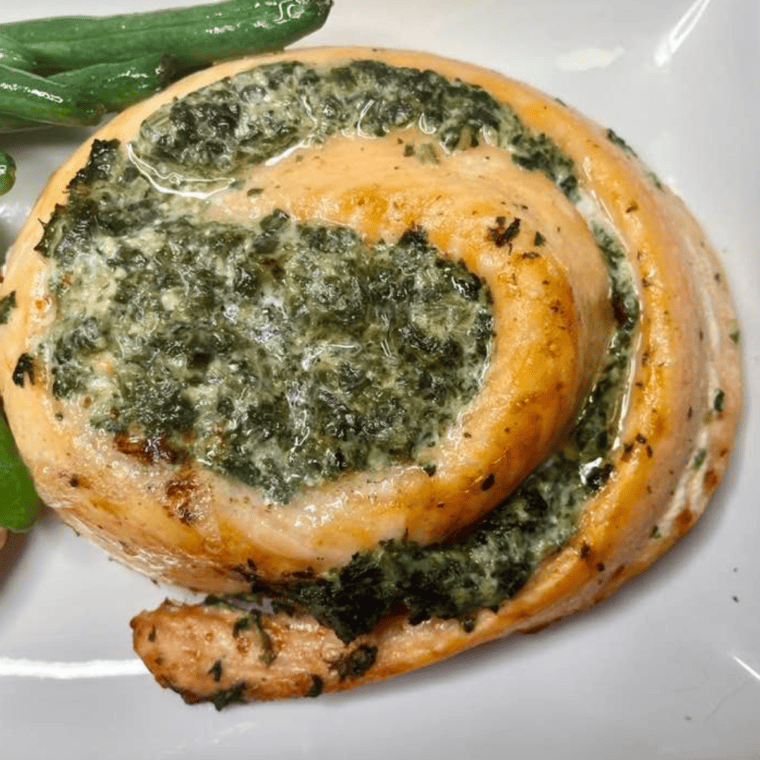
Storing Salmon In The Refrigerator
Proper storage in the refrigerator is crucial for maintaining the freshness and quality of salmon. Raw salmon should be kept at or below 40°F, typically in the coldest part of the refrigerator, when storing it.
Place the salmon in a sealed container or wrap it tightly in plastic or aluminum foil to prevent air exposure and cross-contamination with other foods. If the salmon is cooked, let it cool to room temperature before refrigerating. This storage method is ideal for keeping your salmon fresh and ready for cooking within a short period.
How Long Does Salmon Last In The Fridge
The shelf life of salmon in the fridge depends on whether it’s fresh or cooked. When stored correctly in the refrigerator, fresh salmon should be cooked within one to two days for optimal freshness and safety. Beyond this period, the quality begins to deteriorate, and there’s an increased risk of foodborne illness. Cooked salmon, on the other hand, has a slightly longer fridge life. It can be safely stored in the refrigerator for three to four days. Always check for any off-odors or discoloration before consuming refrigerated salmon, as these are signs of spoilage.

Pro Tips
Storing salmon in the refrigerator properly is essential to maintain its freshness, taste, and safety. Here are some pro tips to ensure your salmon stays in the best condition while refrigerated:
- Cold Storage: Store salmon in the coldest part of your refrigerator, usually at the back, away from the door. This helps maintain a consistent temperature, keeping the fish fresh.
- Airtight Packaging: Wrap the salmon tightly in plastic wrap or aluminum foil or place it in an airtight container. This prevents air exposure, which can cause spoilage, and contains fishy odors.
- Use a Tray or Plate: Place the wrapped salmon on a tray or plate to catch any drips or juices and prevent them from contaminating other foods in the fridge.
- Marinating Safely: If you’re marinating the salmon, always do it in the refrigerator, not at room temperature, to avoid bacterial growth. Also, use the marinade only once and discard it afterward.
- Avoid Cross-Contamination: Store salmon away from ready-to-eat foods to prevent cross-contamination. Raw salmon should especially be kept separate from cooked foods and fresh produce.
- Timing is Key: Fresh salmon should ideally be cooked within one to two days of purchase. Beyond this, the risk of spoilage and foodborne illness increases.
- Cooked Salmon Storage: Ensure cooked salmon cools to room temperature before refrigerating. Store it in a shallow, covered container and consume it within three to four days.
- Check for Freshness: Before cooking the salmon, check for any off-odors, discoloration, or a slimy texture, as these are signs of spoilage.
- Consider Freezing for Longer Storage: If you don’t plan to cook the salmon within 3-4 days, consider freezing it for longer preservation.
- Labeling and Rotation: Label the salmon with the purchase or storage date to track how long it has been in the fridge. Rotate your stored foods so the oldest is used first.
By following these tips, you can ensure your salmon remains fresh and delicious until you’re ready to cook it, reducing food waste and ensuring a safe eating experience.
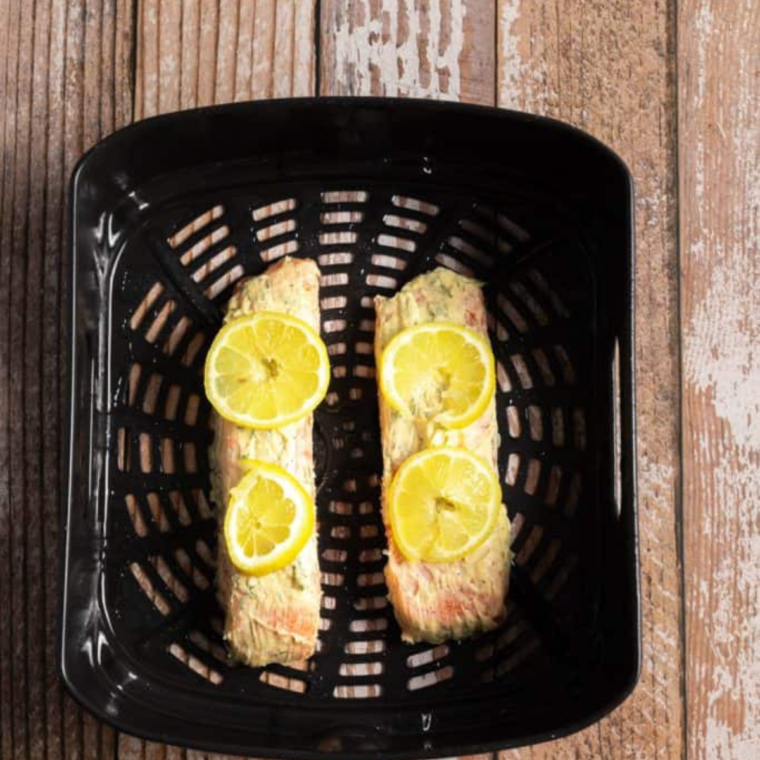
Storing Salmon In The Freezer
For long-term storage, freezing salmon is an excellent option. To freeze fresh salmon, wrap it tightly in plastic or aluminum foil or place it in a freezer-safe bag or container. This will help prevent freezer burn and maintain the fish’s quality. Make sure to remove as much air as possible from the packaging. Cooked salmon can also be frozen, though its texture might change slightly upon thawing. Label the salmon with the freezing date to track how long it has been stored.
How Long Does Salmon Last In The Freezer
Salmon can last up to six months when properly stored in the freezer while maintaining good quality. After this period, it’s still safe to eat, but its quality may decline. It’s best to plan to thaw frozen salmon and let it thaw slowly in the refrigerator. This helps preserve the texture and flavor. Avoid thawing salmon at room temperature, as it can encourage bacterial growth. Once thawed, the salmon should be cooked within a day for the best taste and safety.
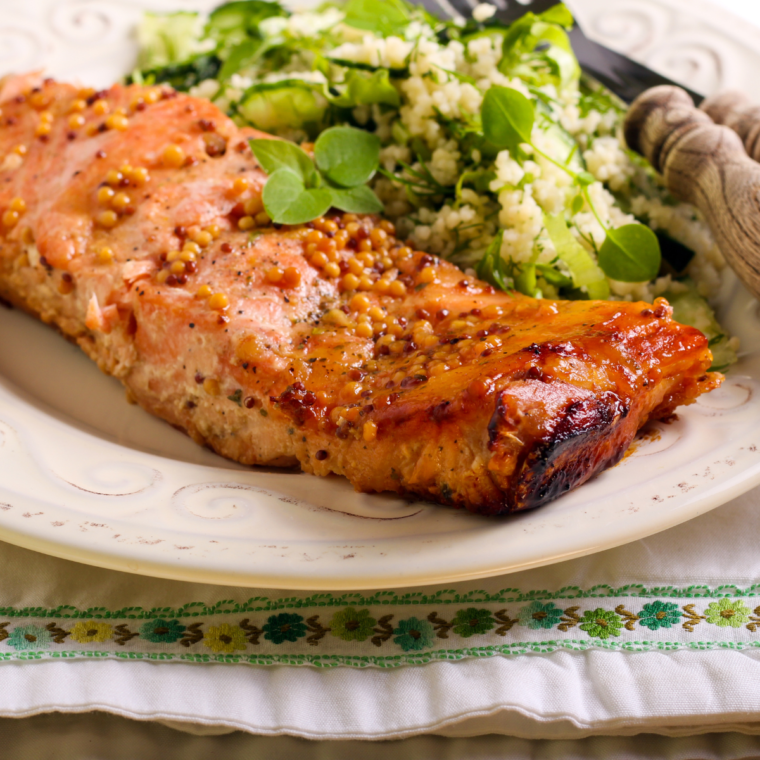
Pro Tips For Storing Salmon In Freezer
Storing salmon fillets in the freezer is an excellent way to extend their shelf life while preserving their quality and flavor. Here are some pro tips for freezing salmon effectively:
- Proper Wrapping: The best way to prevent freezer burn and preserve the quality of the salmon is to wrap it tightly in plastic wrap or aluminum foil or use a vacuum sealer. This also helps to prevent the salmon from absorbing other flavors and odors from the freezer. Remove the salmon from the original store packaging, and try to store it before the use-by date.
- Use Freezer Bags: Place the wrapped salmon in a freezer-safe bag, freezer paper, or a sealable plastic bag if you don’t have a vacuum seal machine. Squeeze out as much air as possible before sealing to protect the fish from freezer burn.
- Label and Date: Always label the packaging with the current date. This helps you track how long the salmon has been stored and ensure you use it within an optimal timeframe.
- Quick Freeze: Place the salmon in the coldest part of your freezer to freeze it quickly. This preserves its texture and tastes better.
- Portioning: If you have a large piece of salmon or a whole salmon filet, whole fish, consider dividing it into meal-sized portions or small portions before freezing. This way, you only thaw what you need, reducing waste.
- Freezing Cooked Salmon: Cooked salmon can also be frozen. Make sure it’s cooled down to room temperature before freezing and stored in airtight containers or tightly sealed freezer bags.
- Thawing Properly: When ready to use the frozen salmon, thaw it in the refrigerator overnight rather than at room temperature. This helps maintain the texture and flavor of the fish and prevents bacterial growth.
- Avoid Refreezing: Once the salmon has been thawed, avoid refreezing it, as this can significantly impact its texture and taste. Plan to use thawed salmon within 24 hours for the best quality.
- Maximum Freezer Time: Ideally, use frozen salmon within three to six months. While it can be safe beyond this period, the quality may degrade.
- Cooking from Frozen: You can cook salmon directly from frozen in a pinch. Adjust your cooking time accordingly, as it will take longer than thawed fish.
By following these tips, you can ensure that your salmon remains as fresh-tasting as possible, providing a delicious and healthy meal option even months after you’ve stored it.

Faq’s
How should I store raw salmon in the fridge? Raw salmon or Fresh Salmon Fillet should be stored in the coldest part of the refrigerator, ideally on the bottom shelf, to prevent cross-contamination and food poisoning. Wrap it tightly in plastic wrap or aluminum foil, or place it in an airtight container.
Can I freeze salmon? Yes, salmon can be frozen to extend its shelf life. Wrap it tightly in plastic wrap, then place it in a heavy-duty freezer bag or wrap again in aluminum foil. Properly stored, salmon can be frozen for up to 3 months without significantly losing quality.
How do I thaw frozen salmon safely? The best way to thaw frozen salmon is by transferring it to the refrigerator and allowing it to thaw slowly, usually overnight. For a quicker method, you can immerse the sealed salmon in cold water, changing it every 30 minutes until it is thawed.
Is it safe to refreeze thawed salmon? If salmon was thawed in the refrigerator and has not been left out at room temperature for more than 2 hours, it’s safe to refreeze. However, there may be a loss of quality due to moisture loss.
How can I tell if salmon has gone bad? Spoiled salmon often has a sour smell or off smell (think ammonia-like odor) and slimy surface and may show signs of discoloration, such as dark spots. If you notice any of these signs, it’s best to discard the salmon to avoid the risk of foodborne illness.
Can I store cooked salmon in the fridge? Yes, cooked leftover salmon can be stored in the fridge. Place it in an airtight container, and it should be consumed within 3 to 4 days for the best quality and safety.
Does smoked salmon have the same storage guidelines as fresh salmon? Smoked salmon, due to its curing process, has a longer shelf life. Unopened, it can last in the fridge for up to 2 weeks. Once opened, it’s best consumed within a week. Check the packaging for specific storage instructions.
What’s the best way to store salmon if I want to use it for sushi? For sushi, it’s crucial to use the freshest salmon possible. Store it in the fridge and use it within 1 to 2 days; sushi salmon has a shorter shelf life than another salmon filet. Freezing salmon at -4°F (-20°C) for at least 7 days before use can help kill any parasites, making it safer for raw consumption.
How to store salmon leftovers: Let the cooked salmon cool to room temperature, then transfer to an airtight container. The salmon will stay in the refrigerator for 1-2 days. For food safety reasons, you should store the salmon in the coldest part of the fridge.
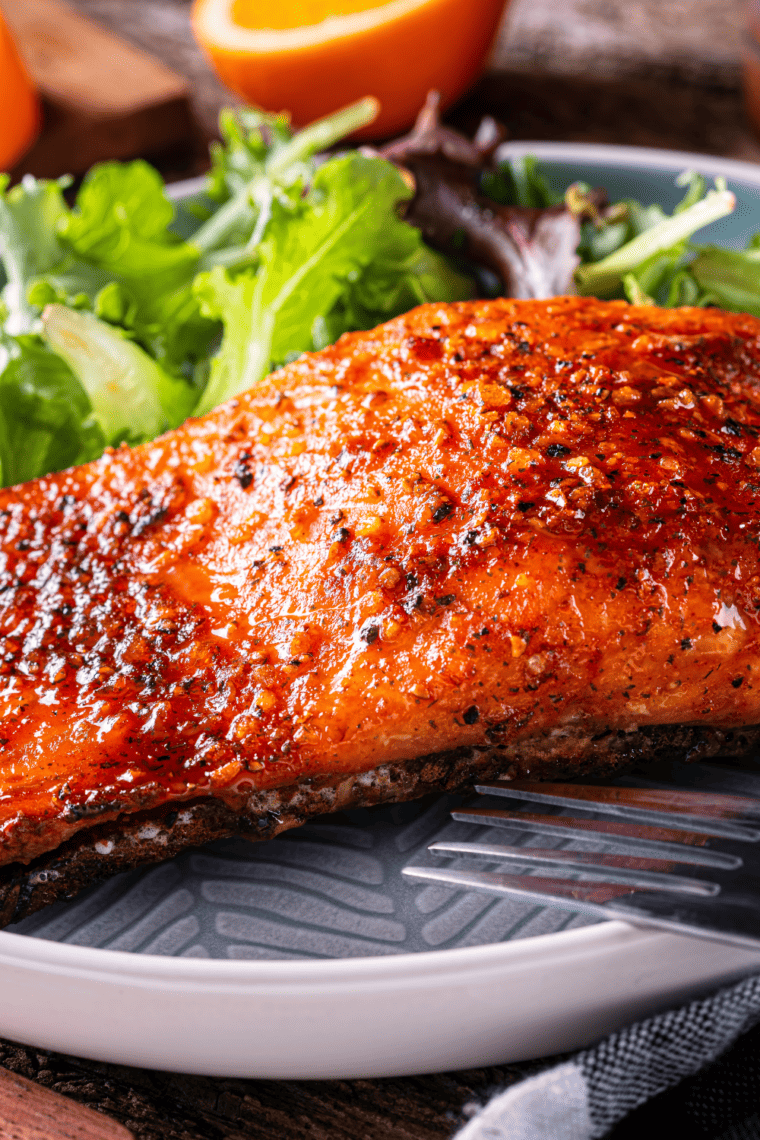
More Easy Recipes
Share Your Creations! Are you active on Facebook? Join our Air Fryer Recipes Group, where hundreds of thousands of Air Fryer enthusiasts gather and share your photos! I’m always thrilled to see what you’ve made. For those on Instagram, don’t forget to tag me @forktospoon – I can’t wait to admire your culinary adventures!
Don’t Forget To Pin!
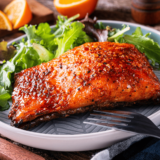
How Long Does Salmon Last In The Fridge
Description
Ingredients
- 4 salmon fillets, 6 ounces each
- 2 tablespoons olive oil
- Salt and pepper, to taste
- 1 tablespoon lemon juice
- 1 teaspoon garlic powder
- 1 teaspoon dried dill or parsley
- Lemon slices, for garnish
Instructions
- Preheat the Oven: Preheat your oven to 400°F (200°C). Line a baking sheet with parchment paper for easy cleanup.
- Season the Salmon: Brush each salmon fillet with olive oil. Sprinkle salt, pepper, garlic powder, and dried dill (or parsley) evenly over the top of each fillet.
- Prepare for Baking: Arrange the salmon fillets on the prepared baking sheet, skin-side down. Drizzle the lemon juice evenly over the fillets.
- Bake: Place the salmon in the preheated oven and bake for 12-15 minutes, or until the salmon flakes easily with a fork. The exact time will depend on the thickness of the fillets.
- Serve: Remove the salmon from the oven and let it rest for a couple of minutes. Garnish with lemon slices and additional herbs if desired.
- Enjoy: Serve the salmon with your choice of sides, such as roasted vegetables, quinoa, or a fresh salad, for a complete and healthy meal.
Equipment
- Baking Sheet
- Parchment Paper, optional
Notes
Recipe Notes:
- Adjust Seasonings: Feel free to adjust the seasonings based on your preferences. Adding a sprinkle of paprika or cayenne pepper can add a nice kick.
- Broil for Crispiness: For a crispy top, broil the salmon for the last 2-3 minutes of cooking.
- Leftovers: Store any leftovers in an airtight container in the refrigerator for up to 3 days.
Nutrition
Share this recipe
We can’t wait to see what you’ve made! Mention @forktospoon or tag #forktospoon!





